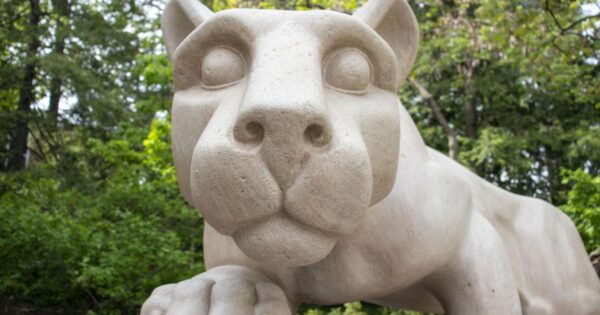When wildfire smoke pollutes the air in schoolyards and school rooms, it hurts not solely youngsters’s well being but in addition their capability to be taught and presumably their future incomes energy, based on a brand new examine.
The evaluation, revealed in Nature Sustainability, attracts on eight years of standardized take a look at scores from practically 11,700 public college districts throughout six grades, in addition to estimates of each day smoke publicity derived from satellite tv for pc measurements.
The researchers discovered take a look at scores in English language arts and math dropped considerably throughout college years even at low ranges of smoke publicity, and that test-score impacts grew as college students’ smoke publicity worsened.
The influence on take a look at scores practically doubled when college students had been uncovered to heavy smoke through the college day in comparison with the weekend. Underscoring earlier research suggesting that air air pollution impacts are significantly dangerous for youthful college students, the examine additionally revealed higher impacts for third to fifth graders in comparison with sixth to eighth graders.
“Earlier analysis means that the pure obstacles of their lungs are nonetheless creating and so they have the next fee of respiration relative to their physique dimension,” says lead examine creator Jeff Wen, a PhD pupil in Earth system science on the Stanford Doerr College of Sustainability.
“Which means that youthful youngsters could also be extra susceptible to smoke impacting their cognition in direct and oblique methods, similar to elevated bronchial asthma assaults that disrupt studying and result in extra college absences.”
Wildfire smoke and faculty places
The examine builds on rising proof that publicity to air air pollution can damage cognition.
“Whereas take a look at scores are an imperfect measure of pupil cognition, they’re a standard metric for evaluating pupil studying with relevance for long-term outcomes and alternatives,” the authors write.
“One of these measurement permits us to match take a look at leads to the identical college district below completely different smoke situations, and to do that for practically all college districts within the US,” Wen says.
Earlier analysis has estimated a relationship between take a look at rating efficiency and future earnings. Based mostly on these estimates, the authors estimate that American college students’ publicity to wildfire smoke in only one 12 months—2016—might decrease cumulative future earnings nationwide by practically $1.9 billion.
“The results for any given pupil are fairly small, however when you begin including up the consequences throughout a whole lot of 1000’s of scholars who’re uncovered, they get fairly massive,” says senior examine creator Marshall Burke, an affiliate professor of Earth system science on the Doerr College.
“Decreasing the danger of utmost wildfires is… going to take billions of {dollars} of funding over a number of years.”
The brand new evaluation exhibits that whereas all districts expertise unfavorable impacts per pupil, roughly 80% of the general burden by way of whole misplaced earnings is borne by districts serving proportionately extra college students of coloration and extra college students who qualify without cost or reduced-price lunch.
It is because there are extra whole college students in these districts and since impacts per pupil are considerably greater—a discovering that needs to be understood to replicate “the potential impact of racist and/or discriminatory insurance policies or attitudes on outcomes,” the researchers write, similar to college students having to attend faculties which have obtained much less funding in filtration. The disparity means that within the absence of intervention, “further will increase in future wildfire smoke publicity on account of local weather change will seemingly disproportionately hurt these communities.”
Protecting children protected
Quantifying beforehand missed social prices of wildfire smoke—a quickly rising supply of publicity to poisonous particle air pollution that’s anticipated to worsen below a warming local weather—is just not solely an instructional train. Reasonably, revealing beforehand hidden long-term prices on the inhabitants scale can assist to inspire and justify extra formidable motion to scale back emissions, smoke publicity, or wildfire danger by way of gasoline administration or different methods.
“Decreasing the danger of utmost wildfires is a crucial however monumental process. It’s going to take billions of {dollars} of funding over a number of years,” Burke says. However on the classroom, district, or neighborhood stage, investments in air con and moveable air filters can assist hold folks protected and permit college students to be taught with cleaner air when smoke plumes drift in.
“After we take into consideration the impacts of wildfire smoke publicity and local weather change, we are able to’t simply restrict our consideration to the obvious locations the place impacts might happen. We actually have to look throughout society and take into consideration all of the sectors that may very well be impacted,” Burke says.
“That helps us reply questions on how a lot we must always put money into mitigating excessive wildfires, or in measures to guard college students in class from poor air high quality—and whether or not these are good investments relative to different issues we are able to spend our cash on.”
Burke can be a senior fellow on the Freeman Spogli Institute for Worldwide Research, the Stanford Woods Institute for the Atmosphere, and the Stanford Institute for Financial Coverage Analysis. He’s additionally deputy director of Stanford’s Middle on Meals Safety and the Atmosphere, a college analysis fellow on the Nationwide Bureau of Financial Analysis, and a member of Bio-X and the Wu Tsai Neurosciences Institute at Stanford.
The Robert Wooden Johnson Basis and Stanford Information Science supported the work.
Supply: Stanford College
